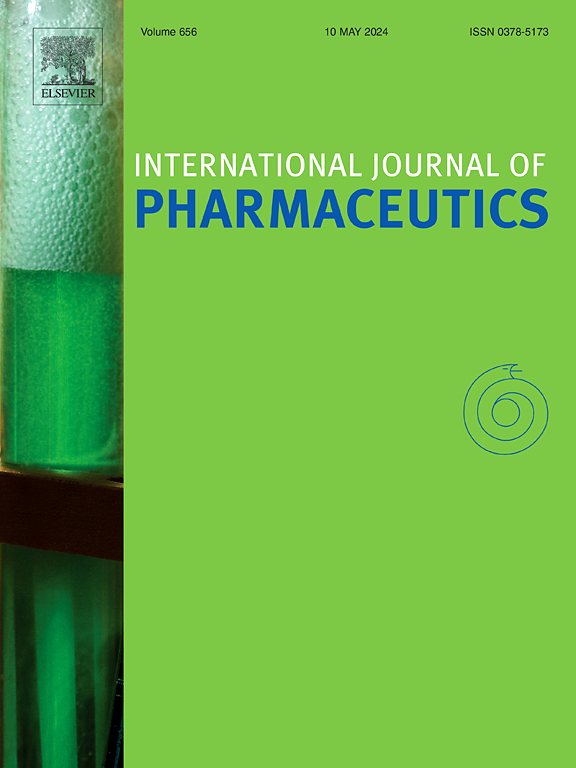用于靶向给药的纳米系统:克服血脑屏障治疗神经退行性疾病和癌症的创新与挑战。
IF 5.3
2区 医学
Q1 PHARMACOLOGY & PHARMACY
引用次数: 0
摘要
精密纳米系统的发展给生物医学带来了革命性的变化,尤其是在治疗神经退行性疾病和癌症方面。这些系统显示出将药物精确输送到受影响组织的潜力,在提高治疗效果的同时将副作用降至最低。然而,靶向给药的一个主要障碍是突破血脑屏障(BBB),这是一种将血液与大脑和脊髓分隔开来的选择性屏障。脑毛细血管内皮细胞之间的紧密连接与驱逐有害分子的外排转运体共同构成了一道坚固的物理屏障。这给脑部药物输送带来了巨大挑战。纳米系统在克服 BBB 挑战方面具有明显优势,可提高药物疗效、减少副作用、改善稳定性和控制释放。尽管前景广阔,但挑战依然存在,例如 BBB 的区域可变性阻碍了药物的均匀分布。外排转运体也会限制治疗药物的疗效,同时纳米系统的毒性也需要严格的安全性评估。了解纳米材料对大脑的长期影响仍然至关重要。此外,解决纳米系统的可扩展性、成本效益和安全性问题对于广泛临床应用也至关重要。本综述深入探讨了先进纳米系统在神经退行性疾病和癌症治疗的靶向给药方面取得的进展和遇到的障碍,重点是如何克服生物BB。本文章由计算机程序翻译,如有差异,请以英文原文为准。
Nanosystems for targeted drug Delivery: Innovations and challenges in overcoming the Blood-Brain barrier for neurodegenerative disease and cancer therapy
The evolution of sophisticated nanosystems has revolutionized biomedicine, notably in treating neurodegenerative diseases and cancer. These systems show potential in delivering medication precisely to affected tissues, improving treatment effectiveness while minimizing side effects. Nevertheless, a major hurdle in targeted drug delivery is breaching the blood–brain barrier (BBB), a selective shield separating the bloodstream from the brain and spinal cord. The tight junctions between endothelial cells in brain capillaries create a formidable physical barrier, alongside efflux transporters that expel harmful molecules. This presents a notable challenge for brain drug delivery. Nanosystems present distinct advantages in overcoming BBB challenges, offering enhanced drug efficacy, reduced side effects, improved stability, and controlled release. Despite their promise, challenges persist, such as the BBB’s regional variability hindering uniform drug distribution. Efflux transporters can also limit therapeutic agent efficacy, while nanosystem toxicity necessitates rigorous safety evaluations. Understanding the long-term impact of nanomaterials on the brain remains crucial. Additionally, addressing nanosystem scalability, cost-effectiveness, and safety profiles is vital for widespread clinical implementation. This review delves into the advancements and obstacles of advanced nanosystems in targeted drug delivery for neurodegenerative diseases and cancer therapy, with a focus on overcoming the BBB.
求助全文
通过发布文献求助,成功后即可免费获取论文全文。
去求助
来源期刊
CiteScore
10.70
自引率
8.60%
发文量
951
审稿时长
72 days
期刊介绍:
The International Journal of Pharmaceutics is the third most cited journal in the "Pharmacy & Pharmacology" category out of 366 journals, being the true home for pharmaceutical scientists concerned with the physical, chemical and biological properties of devices and delivery systems for drugs, vaccines and biologicals, including their design, manufacture and evaluation. This includes evaluation of the properties of drugs, excipients such as surfactants and polymers and novel materials. The journal has special sections on pharmaceutical nanotechnology and personalized medicines, and publishes research papers, reviews, commentaries and letters to the editor as well as special issues.

 求助内容:
求助内容: 应助结果提醒方式:
应助结果提醒方式:


